Pappardelle with Ragu: Prepare to embark on a culinary journey to the heart of Italy with a dish that’s as comforting as it is captivating. Imagine sinking your fork into wide, silky ribbons of pappardelle pasta, each strand generously coated in a rich, slow-simmered ragu sauce. This isn’t just a meal; it’s an experience, a taste of tradition passed down through generations.
Ragu, in its essence, is more than just a meat sauce. It’s a testament to the Italian philosophy of “cucina povera,” or peasant cooking, where humble ingredients are transformed into something extraordinary through patience and love. Originating in Bologna, ragu was traditionally a Sunday meal, a labor of love simmered for hours, filling homes with its irresistible aroma. The specific meats and vegetables used would vary depending on the region and what was available, but the core principle remained the same: slow cooking to develop deep, complex flavors.
What makes pappardelle with ragu so universally adored? It’s the perfect marriage of textures and tastes. The broad, flat pappardelle provides a satisfying chew, while the ragu, with its tender meat and savory sauce, offers a symphony of flavors that dance on your palate. It’s a dish that’s both hearty and elegant, perfect for a cozy weeknight dinner or a special occasion. Plus, the beauty of ragu lies in its adaptability. You can customize it with your favorite meats, vegetables, and herbs to create a truly unique and personalized culinary masterpiece. So, let’s get cooking and create a pappardelle with ragu that will transport you straight to Italy!
Ingredients:
- For the Ragu:
- 2 tablespoons olive oil
- 1 large onion, finely chopped
- 2 carrots, finely chopped
- 2 celery stalks, finely chopped
- 1 pound ground beef (chuck or sirloin), preferably grass-fed
- 1 pound ground pork
- 1/2 pound Italian sausage, casings removed
- 1/2 cup dry red wine (such as Chianti or Sangiovese)
- 2 (28 ounce) cans crushed tomatoes
- 1 (15 ounce) can tomato sauce
- 1/4 cup tomato paste
- 2 bay leaves
- 1 teaspoon dried oregano
- 1/2 teaspoon dried thyme
- 1/4 teaspoon red pepper flakes (optional)
- Salt and freshly ground black pepper to taste
- 1 cup beef broth (or chicken broth)
- 1/2 cup heavy cream (optional, for richness)
- 1/4 cup chopped fresh parsley, for garnish
- For the Pappardelle:
- 1 pound fresh pappardelle pasta (or dried, if fresh is unavailable)
- Salt, for pasta water
- Grated Parmesan cheese, for serving
Preparing the Ragu:
- Sauté the Vegetables: Heat the olive oil in a large, heavy-bottomed pot or Dutch oven over medium heat. Add the chopped onion, carrots, and celery. Cook, stirring occasionally, until the vegetables are softened and slightly caramelized, about 8-10 minutes. This step is crucial for building flavor, so don’t rush it! You want them to be nicely browned, but not burned.
- Brown the Meats: Add the ground beef, ground pork, and Italian sausage to the pot. Break up the meats with a wooden spoon and cook, stirring frequently, until browned all over. Make sure to crumble the meat well to avoid large clumps. Drain off any excess grease. This is important for preventing a greasy ragu.
- Deglaze with Red Wine: Pour in the red wine and scrape up any browned bits from the bottom of the pot. Let the wine simmer for a few minutes, allowing the alcohol to evaporate. This adds depth and complexity to the ragu. The aroma at this stage is amazing!
- Add Tomatoes and Seasonings: Stir in the crushed tomatoes, tomato sauce, tomato paste, bay leaves, oregano, thyme, and red pepper flakes (if using). Season with salt and pepper to taste. Remember, you can always add more seasoning later, so start conservatively.
- Simmer the Ragu: Bring the ragu to a simmer, then reduce the heat to low, cover, and cook for at least 2-3 hours, or even longer for a richer flavor. Stir occasionally to prevent sticking. The longer it simmers, the more the flavors will meld together. If the ragu becomes too thick, add a little beef broth to thin it out. I often let mine simmer for 4 hours!
- Finish the Ragu: Remove the bay leaves. If using, stir in the heavy cream for added richness. Taste and adjust the seasoning as needed. Stir in the chopped fresh parsley just before serving.
Cooking the Pappardelle:
- Boil the Water: Bring a large pot of salted water to a rolling boil. The water should be generously salted it should taste like the sea! This seasons the pasta from the inside out.
- Cook the Pasta: Add the pappardelle pasta to the boiling water and cook according to package directions, usually about 2-3 minutes for fresh pasta or 8-10 minutes for dried pasta. Cook until al dente, meaning “to the tooth” it should be firm but not hard.
- Reserve Pasta Water: Before draining the pasta, reserve about 1 cup of the pasta water. This starchy water is liquid gold and helps to create a silky sauce.
- Drain the Pasta: Drain the pasta in a colander. Do not rinse the pasta unless you are not serving it immediately.
Combining and Serving:
- Combine Pasta and Ragu: Add the drained pasta to the pot with the ragu. Toss to coat the pasta evenly with the sauce. If the sauce is too thick, add a little of the reserved pasta water until it reaches your desired consistency.
- Serve Immediately: Serve the pappardelle with ragu immediately in bowls. Garnish with grated Parmesan cheese and a sprinkle of fresh parsley.
Tips and Variations:
- Meat Variations: Feel free to experiment with different types of meat in the ragu. Ground veal, lamb, or even a combination of meats can be used.
- Vegetable Additions: Add other vegetables to the ragu, such as mushrooms, bell peppers, or zucchini. Sauté them along with the onions, carrots, and celery.
- Wine Choice: While Chianti or Sangiovese are classic choices for ragu, other dry red wines like Cabernet Sauvignon or Merlot can also be used.
- Spice Level: Adjust the amount of red pepper flakes to your liking, or omit them altogether if you prefer a milder ragu.
- Slow Cooker Option: The ragu can also be made in a slow cooker. Brown the meats and sauté the vegetables as directed, then transfer everything to the slow cooker. Cook on low for 6-8 hours or on high for 3-4 hours.
- Freezing Instructions: Ragu freezes beautifully! Let it cool completely, then transfer it to freezer-safe containers or bags. It can be stored in the freezer for up to 3 months. Thaw overnight in the refrigerator before reheating.
- Adding Milk: Some traditional ragu recipes call for adding milk instead of cream. This adds a subtle sweetness and richness to the sauce. Add about 1/2 cup of whole milk to the ragu during the last 30 minutes of simmering.
- Herb Variations: Experiment with different herbs in the ragu. Rosemary, sage, or marjoram can all be used in addition to or instead of oregano and thyme.
- Serving Suggestions: While pappardelle is the classic choice for ragu, other types of pasta, such as tagliatelle, fettuccine, or rigatoni, can also be used. You can also serve the ragu over polenta or mashed potatoes.
- Make it Vegetarian: For a vegetarian version, substitute the meat with lentils or mushrooms. Brown the lentils or mushrooms in the same way you would brown the meat.
Make Ahead Tips:
- Ragu: The ragu can be made up to 3 days in advance and stored in the refrigerator. In fact, the flavor often improves after a day or two.
- Pasta: If using fresh pasta, it’s best to cook it just before serving. Dried pasta can be cooked ahead of time, but be sure to toss it with a little olive oil to prevent it from sticking together.
Nutritional Information (Approximate):
Note: Nutritional information is an estimate and may vary based on specific ingredients and portion sizes.
- Calories: 600-800 per serving
- Protein: 40-50 grams
- Fat: 30-40 grams
- Carbohydrates: 50-60 grams
Enjoy your delicious Pappardelle with Ragu! I hope you love it as much as I do!
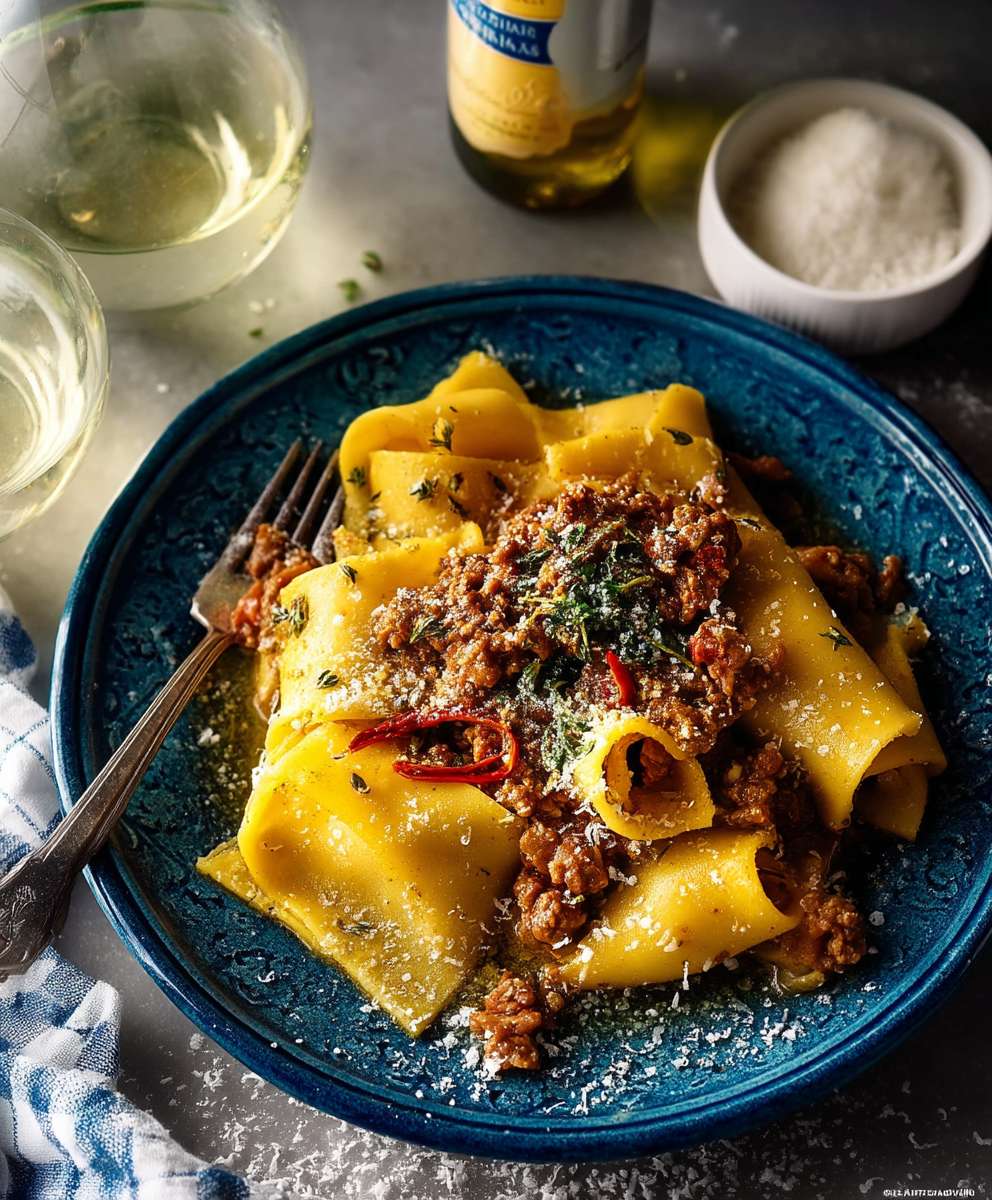
Conclusion:
This isn’t just another pasta dish; it’s an experience. The rich, slow-cooked ragu, clinging lovingly to the wide, silky strands of pappardelle, is a symphony of flavors that will transport you straight to a cozy Italian trattoria. I truly believe this pappardelle with ragu recipe is a must-try for anyone who appreciates authentic Italian comfort food. The depth of flavor achieved through the patient simmering process is simply unparalleled, and the resulting sauce is so incredibly satisfying.
But don’t just take my word for it! The beauty of this recipe lies in its versatility. While I’ve outlined my go-to method, feel free to experiment and make it your own. For a richer, more decadent experience, try adding a splash of heavy cream towards the end of the cooking process. If you’re feeling adventurous, incorporate some finely chopped pancetta or guanciale at the beginning, rendering the fat to create an even more flavorful base.
Serving suggestions? Oh, the possibilities! A simple sprinkle of freshly grated Parmesan cheese is a classic and timeless choice. However, for a bolder flavor profile, consider Pecorino Romano. A dollop of creamy ricotta cheese on top adds a delightful textural contrast. And don’t forget the crusty bread for soaking up every last drop of that glorious ragu! A side of simple green salad with a light vinaigrette provides a refreshing counterpoint to the richness of the pasta.
For a vegetarian variation, you can easily adapt this recipe by substituting the meat with a medley of hearty vegetables like mushrooms, eggplant, and zucchini. Sauté them until tender and slightly caramelized before adding them to the tomato sauce. You can also add lentils or beans for extra protein and texture. The key is to maintain the slow-cooking process to allow the flavors to meld together beautifully.
Don’t be intimidated by the seemingly long cooking time. Most of it is hands-off, allowing you to relax and enjoy the aromas filling your kitchen. Trust me, the end result is well worth the wait. This pappardelle with ragu is perfect for a special occasion, a cozy weeknight dinner, or even a potluck with friends. It’s a dish that’s guaranteed to impress and leave everyone wanting more.
I’m so excited for you to try this recipe! It’s become a staple in my own kitchen, and I know it will become one in yours too. Once you’ve given it a go, I’d absolutely love to hear about your experience. Did you make any modifications? What were your favorite serving suggestions? Share your photos and stories in the comments below! Let’s create a community of ragu enthusiasts and inspire each other with our culinary creations. Happy cooking, and buon appetito!
Remember to adjust the seasoning to your liking. Taste as you go and don’t be afraid to add a little extra salt, pepper, or even a pinch of red pepper flakes for a touch of heat. The most important ingredient is love, so pour your heart into it and enjoy the process. I can’t wait to see what you create!
Pappardelle with Ragu: A Delicious & Easy Recipe
Hearty Italian classic! Wide pappardelle noodles tossed in slow-simmered meat ragu, rich with ground beef, pork, Italian sausage, aromatic vegetables, and herbs.
Ingredients
- 2 tablespoons olive oil
- 1 large onion, finely chopped
- 2 carrots, finely chopped
- 2 celery stalks, finely chopped
- 1 pound ground beef (chuck or sirloin), preferably grass-fed
- 1 pound ground pork
- 1/2 pound Italian sausage, casings removed
- 1/2 cup dry red wine (such as Chianti or Sangiovese)
- 2 (28 ounce) cans crushed tomatoes
- 1 (15 ounce) can tomato sauce
- 1/4 cup tomato paste
- 2 bay leaves
- 1 teaspoon dried oregano
- 1/2 teaspoon dried thyme
- 1/4 teaspoon red pepper flakes (optional)
- Salt and freshly ground black pepper to taste
- 1 cup beef broth (or chicken broth)
- 1/2 cup heavy cream (optional, for richness)
- 1/4 cup chopped fresh parsley, for garnish
- 1 pound fresh pappardelle pasta (or dried, if fresh is unavailable)
- Salt, for pasta water
- Grated Parmesan cheese, for serving
Instructions
- Heat the olive oil in a large, heavy-bottomed pot or Dutch oven over medium heat. Add the chopped onion, carrots, and celery. Cook, stirring occasionally, until the vegetables are softened and slightly caramelized, about 8-10 minutes.
- Add the ground beef, ground pork, and Italian sausage to the pot. Break up the meats with a wooden spoon and cook, stirring frequently, until browned all over. Drain off any excess grease.
- Pour in the red wine and scrape up any browned bits from the bottom of the pot. Let the wine simmer for a few minutes, allowing the alcohol to evaporate.
- Stir in the crushed tomatoes, tomato sauce, tomato paste, bay leaves, oregano, thyme, and red pepper flakes (if using). Season with salt and pepper to taste.
- Bring the ragu to a simmer, then reduce the heat to low, cover, and cook for at least 2-3 hours, or even longer for a richer flavor. Stir occasionally to prevent sticking. If the ragu becomes too thick, add a little beef broth to thin it out.
- Remove the bay leaves. If using, stir in the heavy cream for added richness. Taste and adjust the seasoning as needed. Stir in the chopped fresh parsley just before serving.
- Bring a large pot of salted water to a rolling boil.
- Add the pappardelle pasta to the boiling water and cook according to package directions, usually about 2-3 minutes for fresh pasta or 8-10 minutes for dried pasta. Cook until al dente.
- Before draining the pasta, reserve about 1 cup of the pasta water.
- Drain the pasta in a colander.
- Add the drained pasta to the pot with the ragu. Toss to coat the pasta evenly with the sauce. If the sauce is too thick, add a little of the reserved pasta water until it reaches your desired consistency.
- Serve the pappardelle with ragu immediately in bowls. Garnish with grated Parmesan cheese and a sprinkle of fresh parsley.
Notes
- Meat Variations: Feel free to experiment with different types of meat in the ragu. Ground veal, lamb, or even a combination of meats can be used.
- Vegetable Additions: Add other vegetables to the ragu, such as mushrooms, bell peppers, or zucchini. Sauté them along with the onions, carrots, and celery.
- Wine Choice: While Chianti or Sangiovese are classic choices for ragu, other dry red wines like Cabernet Sauvignon or Merlot can also be used.
- Spice Level: Adjust the amount of red pepper flakes to your liking, or omit them altogether if you prefer a milder ragu.
- Slow Cooker Option: The ragu can also be made in a slow cooker. Brown the meats and sauté the vegetables as directed, then transfer everything to the slow cooker. Cook on low for 6-8 hours or on high for 3-4 hours.
- Freezing Instructions: Ragu freezes beautifully! Let it cool completely, then transfer it to freezer-safe containers or bags. It can be stored in the freezer for up to 3 months. Thaw overnight in the refrigerator before reheating.
- Adding Milk: Some traditional ragu recipes call for adding milk instead of cream. This adds a subtle sweetness and richness to the sauce. Add about 1/2 cup of whole milk to the ragu during the last 30 minutes of simmering.
- Herb Variations: Experiment with different herbs in the ragu. Rosemary, sage, or marjoram can all be used in addition to or instead of oregano and thyme.
- Serving Suggestions: While pappardelle is the classic choice for ragu, other types of pasta, such as tagliatelle, fettuccine, or rigatoni, can also be used. You can also serve the ragu over polenta or mashed potatoes.
- Make it Vegetarian: For a vegetarian version, substitute the meat with lentils or mushrooms. Brown the lentils or mushrooms in the same way you would brown the meat.
- Ragu Make Ahead: The ragu can be made up to 3 days in advance and stored in the refrigerator. In fact, the flavor often improves after a day or two.
- Pasta Make Ahead: If using fresh pasta, it’s best to cook it just before serving. Dried pasta can be cooked ahead of time, but be sure to toss it with a little olive oil to prevent it from sticking together.


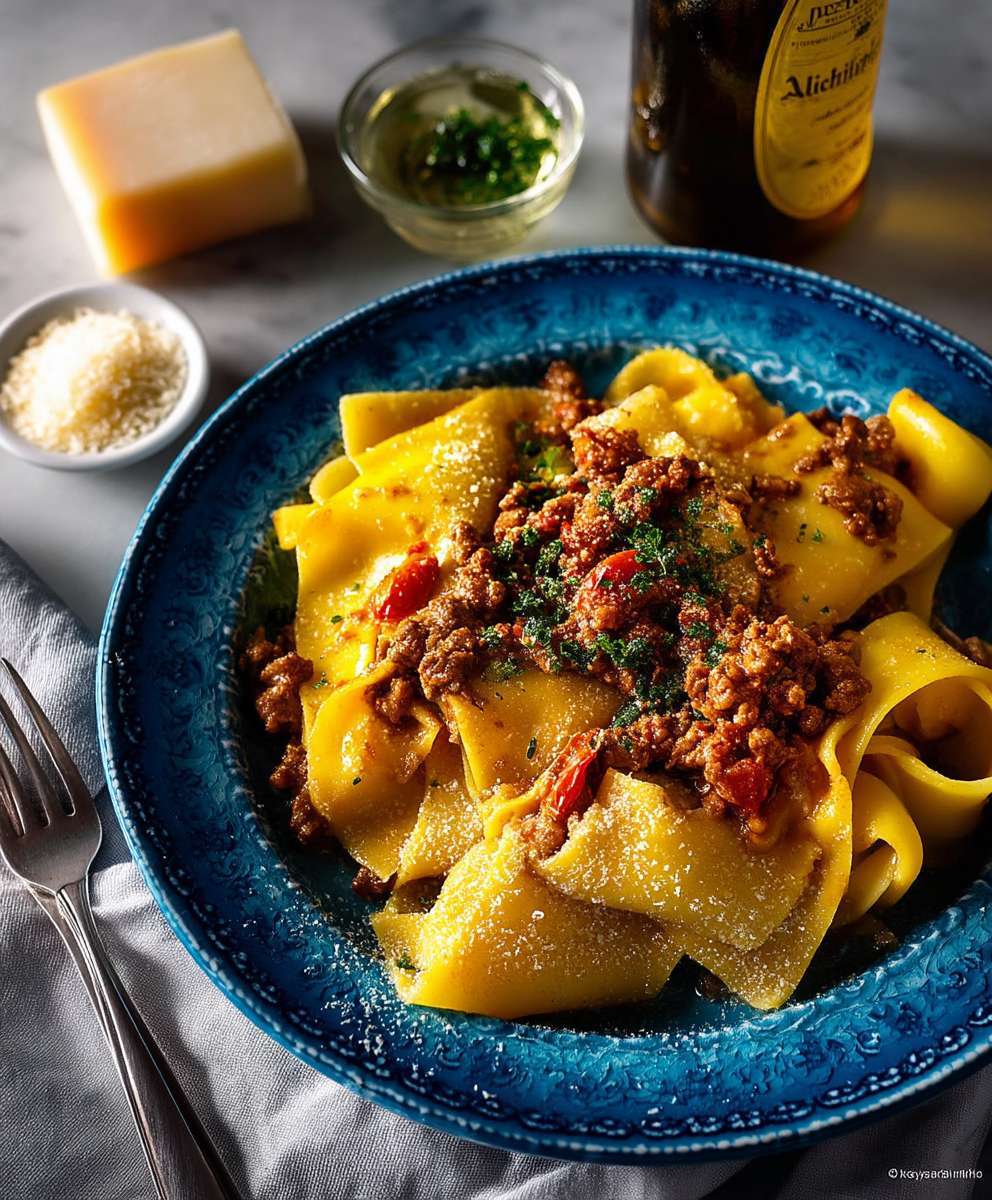
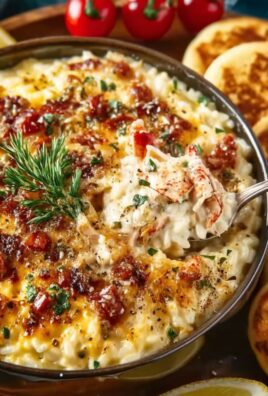
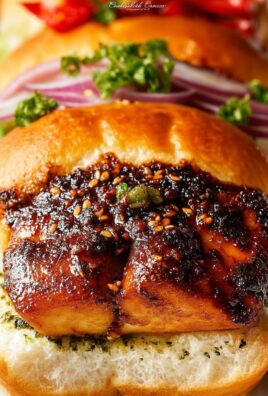
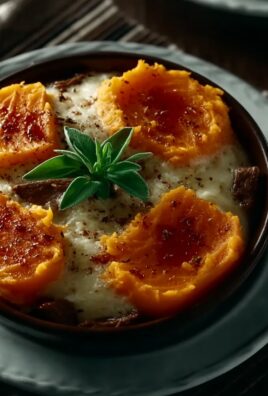
Leave a Comment